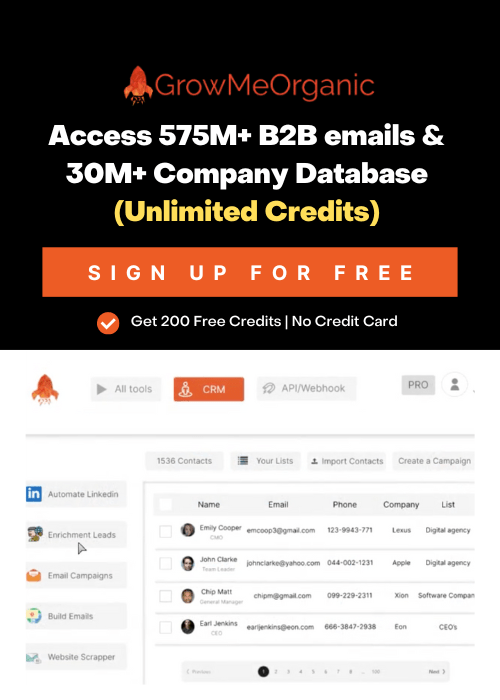Email is something we all use in our personal and professional lives. But sometimes, it can be hard to keep track of all the messages we receive. That’s where email threads come in. They let us put related emails together in one place, so we can follow the conversation more.
Whether you’re new to email or an expert, using email threads can help you be more organized and save time. In this article, we’ll explain what email threads are, how they work, and how you can use them to communicate better.
What Is an Email Thread?
An email thread, also known as an email chain or conversation, is a collection of related messages that are grouped in a single email.
For example, let’s say you receive an email from your boss asking for your input on a new project. You respond to the email with your ideas, and your boss responds to your email with some follow-up questions. The conversation then continues within the same email thread, with each subsequent message added to the thread.
As the conversation progresses, you and your boss can refer back to previous messages in the thread to keep track of the discussion and ensure everyone is on the same page. By organizing related messages together in one thread, email threads make it easier to manage your inbox and stay on top of your communication with others.
Using Email Validation in your email communication practices is a fundamental step for beginners to ensure the effectiveness and integrity of email threads. It not only improves deliverability but also helps in building a positive sender reputation and maintaining accurate contact information for better communication.
Benefits of an Email Thread – Do I Need It?
Email threads are a great tool for information and simplifying marketing. Messages can usually be sent and replied to individually. Suppose you need to send a message to a group of people within an organization who belong to the same team. In this case, the traditional method would be to list several recipients in the “To” field.
The process of following up on a particular project or task each time can be stressful and time-consuming.
In such cases, email threading allows everyone in the team to answer the original message without having to write new messages and fill them with important information.
Thus, threaded email keeps everyone updated while simplifying correspondence. Let’s discuss in more detail why that is convenient and how email threads can be used in other ways.
✅ Organizing related emails
Email threads organize related emails and email replies into a single message like a discussion. Organizing related emails can be a challenge, but email threading is an efficient solution that helps you keep your inbox clean and organized. You can easily follow the conversation and go back to any part of it if you need to. It’s a helpful tool for staying on top of your email messages.
Email threading is useful for marketing professionals, as it helps them understand customer conversations and adjust their strategies accordingly. By using email threading, you can save time and stay organized – ensuring that you’re making the most out of every email exchange.
✅ Reducing the amount of email clutter in your inbox
Managing email clutter in your inbox can be a daunting and time-consuming task. It can be tedious and time-consuming, and can even take away from productivity when you have to search through emails that aren’t relevant to you.
The email thread method is an effective way to group emails with similar topics together. This makes it look like one conversation instead of a long list of different messages, helping to deal with the issue of disorganization.
You can also reduce the amount of email clutter in your inbox by unsubscribing from promotional emails, newsletters, and other marketing lists. This will free up your inbox, keep you organized, and allow you to focus on important emails.
If you send a message to an email user who does not support email threads, you will only receive a single message, instead of ten messages.
✅ Streamlining email tracking
Email tracking helps to ensure that all emails sent to customers and clients have been received, read, and responded to in a timely manner. Streamlining email tracking is a great way to maximize the efficiency of correspondence between parties while maintaining accuracy and organization.
Using email threading as part of one’s email marketing strategy can go a long way in streamlining this process. By keeping track of all emails in chronological order, users are able to quickly review any past conversations with customers or clients. This makes it easier for businesses to stay on top of their communications with customers and provide timely responses.
Email correspondence is a necessary part of our daily routine, so you will understand how useful this is.
✅ Informing everyone
Email threading is a quick and effective way to communicate information to a large audience without compromising the message’s quality. It has become popular because it helps with customer engagement, brand loyalty, and sales growth.
Threaded email messages organize conversations between many people into a single conversation. It also helps users keep track of all their conversations, attachments, and responses from other thread members. This helps marketers stay on top of customer inquiries and interests while spending less time searching for information.
The subsequent responses are sent to all the people who received the initial emails. A team with a group email follows the same procedure. Anyone on the team, even the team leader, can see the responses, learn from the discussion, and contribute with ease.
The Disadvantages of an email thread
While email threads have many benefits, there are a few disadvantages, as-
❌ Too many people are on the distribution list.
An email thread can accommodate many recipients. But, it has the downside that you will get emails you don’t want to see in your inbox. If you want to avoid this, only include recipients who need to see the replies.
Using threaded email conversations ensures that necessary conversations happen without confusion or interruption. It also helps businesses prevent important information from getting lost in overloaded email threads. This saves time and confusion by ensuring that each participant gets the relevant information they need.
By including only necessary participants in a thread, businesses can create a more organized and productive communication environment.
❌ Email threads are not available on all email servers.
This feature is not available unless your email is hosted by a system that supports threaded replies. Without this feature, users must manually manage each conversation individually, which can be a time-consuming task.
It is essential for companies using email marketing campaigns to make sure their chosen server supports threading, enabling them to manage multiple conversations simultaneously.
Additionally, customers often expect quick responses, and having the ability to view past conversations can be invaluable in providing delayed responses caused by manual sorting. With threading, companies can quickly answer customer inquiries and provide a better customer experience.
❌ The length of a thread seems to have no limit.
Without a limit on how many messages can be added to a thread, it is not uncommon for a chain of emails to grow to be hundreds or even thousands deep. This can create a lot of information for both customers and marketers alike as they try to keep up with all the messages being sent in a single thread all the time.
After not being at work for a few days, it may take forever to scroll back to the beginning of the thread and join the conversation.
Turning on Email Thread Mode
If threaded messages are not organized, they can be nerve-racking to deal with. It can be intimidating when you open your email after a week and see a long thread of correspondence. What are your tips for organizing your email thread? The steps are as follows.
To begin with, you must know that your email is set to Conversation View or “message threading”. Unread messages in threads are bolded for easy identification, and red exclamation marks say essential or urgent messages. Secondly, ensure that the email thread feature is supported by your email client.
Gmail
- The first step is to open your email. Go to your top right corner and click on Settings. By clicking on it, you will be able to access the Settings menu.
- Choose “See all settings,” then click on “Email Threading”.
- Then, to turn Conversation View on or off, toggle between the ON and OFF modes by selecting “Conversation View.”.
Are There Any Other Uses for Email Thread Mode?
In email threading, there are a few more features. Here are the steps for adding or removing respondents to the thread.
Adding Contacts
Adding a contact to the recipient list is the same procedure as adding a contact to the list. After you’ve seen the To and CC fields, you’ll also see different email addresses, each of which will have an “x” next to it. If you want to remove an address, tap the “x” in front of it.
The removal of contacts is particularly important if you want to send your message only to those who need it. As a result, you can send a private message within a threaded reply.
Remove the contacts
Adding a contact to the recipient list is the same procedure as adding a contact to the list. After you’ve seen the To and CC fields, you’ll also see different email addresses, each of which will have an “x” next to it. If you want to remove an address, tap the “x” in front of it.
The removal of contacts is particularly important if you want to send your message only to those who need it. As a result, you can send a private message within a threaded reply.
Turn off the conversation
If you want to take a break from receiving threaded messages – you are on vacation or not working – you can mute the thread, and messages in that conversation will stop coming to you.
Simply go to your inbox in Gmail, select the message you want to mute, and click “More”. To unmute, just select “Unmute.”
The Best Tips for Maintaining an Effective Email Thread
To help you manage your inbox, here are some tips on how to avoid the common mistakes of maintaining an effective email thread:
Always send a quick follow-up.
When we send someone a lengthy email, it’s always good etiquette to send them a quick “Thanks for your email” note, even if you don’t need any more information from that person. This is just a courtesy so the recipient knows that you received their email and aren’t ignoring them. Always be mindful of what you’re sending out to others, especially when it’s a one-sided conversation.
Avoid using too many CCs.
With every person you CC in an email, the person handles forwarding it to any more recipients and managing their inbox. This means that they need to read the email and respond as necessary.
If a person knows nothing about your email thread, they will ignore your emails and only continue to address those issues with you. Also, they could think you are being rude by not including them in the conversation.
End each email with a call to action.
If you want your coworkers to be proactive about an issue, tell them what you want them to do next! If a certain project isn’t completed, specify the deadline or when you need that information. It’s not rude to ask people for their time; it just shows that you respect their schedules and they’ll appreciate it.
Be specific with your requests . . . and don’t be vague.
One of the most important parts of maintaining an effective email thread is being specific with everything you request from your coworkers. Even if you’re asking them to complete a project, provide any necessary information that they need to carry out your request.
But don’t be too detailed.
While it’s good to be specific with requests, it’s also good to be respectful of people’s work time. Make sure you ask your coworkers for something that can fit into their schedule and give them some time to respond before you start getting frustrated.
If you’re asking for help, make sure that you clarify exactly what you need from them so they don’t feel obligated to respond if they’re not willing to do it.
Always Include a Signature at the End
Including your signature at the end of the email is another very effective tip. This approach will definitely allow you to maintain an effective email thread. Although this might seem unimportant, people value it a lot. They basically perceive you as highly reliable and professional if you use a signature at the bottom of the mail.
So, if you’re wondering how to make a signature, you can always use an online signature generator. Therefore, you’ll be able to draw it, type it in the box on their official website and select your preferred font, or write the signature by hand and just attach the scanned photo.
Regardless of the method you go for, you’ll receive your signature and be able to use it in your email threads.
Examples of Email Thread
Email threads are an easy way for people to communicate and share ideas. They allow the sender to send more than one message at a time and then have the recipient get back to them on their timeline. They can be used for brainstorming or commenting on drafts of a paper.
They are also an easy way to show other people what you are talking about if you are away from the office or where you were last discussing it. It is a convenient way for businesses to share information that many people need to be able to view.
For example, if someone leaves work for vacation and then returns, they have missed all of the updates that happened while they were gone. Email threads ensure that this doesn’t happen and everyone knows what the newest developments are in any given project at all times.
The following are some examples of email threads.
1. Remote Camping
Here, the sender and recipient send messages to each other at different times, but all in one thread. One person talks about their weekend plans and the next person replies to them saying that she plans on going camping too if it is okay with them both.
There are more than two people here and there are more than two messages but they are still in the same email thread.
2. Meetings
This email thread has only a few messages and most are short. It is good to avoid long emails because they are harder to get through, especially if you are on a busy schedule. Follow-up emails make it easy to stay on top of things, but don’t make it too easy or you will appear like you aren’t doing any work.
3. A Research Paper
This email thread shows that one person did some research and then sent it to the rest of the people in the thread for feedback. This is a very good way to get everyone involved and make the best decision possible.
4. A Journal Entry
This email thread shows that the person who is writing has marked a date on their calendar, but they are still working on it. The next person received the message as it was being written and then responded with a message about their schedule for that day, which prompted the writer to write again.
They also made notes about what they thought of the other person’s reply to them and then wrote back again.
Types of Email Threads
The email thread has become a staple of our digital communication. Email threads can be used to track information and progress in group conversations, direct a large team across different time zones, get a group on the same page, or just keep up with friends.
But, as more people join an email thread, things can get somewhat out of hand — especially if they’re not familiar with the jargon used on it.
To help you decode these digital threads, here are the four types of email threads and some tips on how to approach them:
1. The Conventional Thread (aka “The What’s Happening Thread”)
Most people think of an email thread as a long, drawn-out conversation — often between only two people. Perhaps that is the goal, but in reality, it’s usually better served if everyone in the thread gets an idea of what’s been going on so far.
You can use a traditional email thread to update your friends or colleagues on an event you’ve been planning for some time (but won’t start for a bit).
2. The Quick-to-The-Point Thread
This type of thread is great for sharing relevant links or updates you’ve found along the way. In this thread, you don’t have time to explain everything that’s happened, so you just decide what points are most important and leave it at that.
3. The Who-Did-What Thread
In this type of thread, people share what they’ve done to prepare for an upcoming event. Depending on the size of your group, this type of thread joins one or more people together with a particular task they need to do.
4. The Let’s Meet Thread
Some email threads are for planning a time to get together. It could be for lunch, drinks, or your weekly book club meeting — it doesn’t matter. If you’re discussing a specific date and time to meet up, no reason to use an email thread other than to remind everyone of the plan.
Instead, try talking on Skype (for those who use it) or setting up a group text message. This will save you time, while also making sure everyone has a chance to weigh in on what’s going on.
Conclusion
Email threading is a great way to keep track of conversations and make sure that everyone is on the same page. With the help of this guide, you now have the knowledge and understanding to take advantage of this convenient technology.
Whether you’re managing many threads or one, you can make sure that everyone is able to follow the conversation and stay organized. With email threading, you can make sure that no one gets lost in the shuffle.
With the right tools and tips, anyone can learn how to use email threading. With a bit of practice, you can keep your communication organized and efficient. So why not give it a try today and start taking advantage of the many benefits that email threading can offer your team?
About Post Author
Anant Gupta
Growth Hacker, Marketing Automation Enthusiast & Founder of GrowMeOrganic













